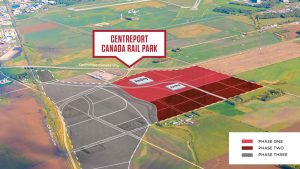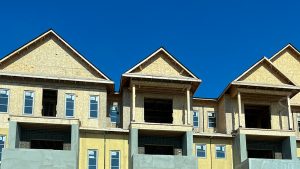Modern apartment buildings and schools crumbled, smoothly paved highways buckled and bridges collapsed, their flimsy construction no match for the awesome forces of nature.
Building standards adequate, but inspection process falls short
DUJIANGYAN, CHINA
Modern apartment buildings and schools crumbled, smoothly paved highways buckled and bridges collapsed, their flimsy construction no match for the awesome forces of nature.
As the death toll soared from the powerful earthquake that ravaged China’s Sichuan province, the scale of the devastation is raising questions about the quality of China’s recent construction boom.
“This building is just a piece of junk,” one newly homeless resident of Dujiangyan yelled, her body quivering with rage. Her family salvaged clothing and mementos from their wrecked apartment, built when their older home was razed 10 years ago.
“The government tricked us. It told us this building was well constructed. But look at the homes all around us, they’re still standing,” said the woman, who would give only her surname, Chen.
Three decades of high-paced growth have remade China, with stunning showcase metropolises like Beijing and Shanghai as well as formerly tiny county towns that are now small cities with office towers and multi-storey apartment buildings.
But as the widespread devastation from the quake shows, the pell-mell pace has led some builders to cut corners, especially in outlying areas largely populated by the very young and the very old.
“This new economy in China is not going up safely, it’s going up fast, and the two don’t go together,” said Roger Bilham, a professor of geological sciences at the University of Colorado at Boulder.
“You look at the buildings that fell and they should not have fallen,” he said. “This is a story that has been repeated throughout the developing nations.”
New buildings in Beijing — like the signature “Bird’s Nest” National Stadium for this August’s Olympics — are built to exacting codes to withstand earthquakes. But “anti-earthquake standards are not as strict in places like Sichuan as in Shanghai,” said Ren Bing, an architectural designer at Hong Kong-based China Construction International Co.
The quake flattened smaller towns in the disaster zone like Yingxiu, where 7,700 people were reported to have died, according to aerial footage shown on state-run China Central Television. A hilltop view of Beichuan, another hard-hit town, showed entire blocks of apartment buildings that seemingly disintegrated.
In Dujiangyan city, where rescuers saved a woman eight months pregnant who was trapped for 50 hours under a collapsed apartment building, there was little evidence of steel reinforcement bars in the concrete rubble.
Other infrastructure old and new suffered as well.
Nearly 400 dams, most of them small, were damaged across Sichuan, the government’s economic planning agency said on its website. One of the two bigger ones, Zipingpu, had cracks 10 centimetres across its top; and though the government said the dam was safe, its reservoir was drained.
China is jolted by thousands of earthquakes every year, at least several of them major ones that cause significant damage and loss of life. Since the 1976 quake in Tangshan near Beijing killed at least 240,000 people, the communist government has tried to improve building standards.
“China has been taking earthquake safety very seriously in the past 10 to 20 years,” said Susan Tubbesing, head of the California-based Earthquake Engineering Research Institute. “From what I understand, the codes China has adopted in the past 20 years have been good, solid, seismic codes.”
One problem is that enforcement of building codes varies.
The construction boom that has underpinned much of the stunning growth has been an invitation for corruption, with officials and developers colluding.
In larger cities like Shanghai, authorities generally enforce regulations. But that isn’t always true in smaller cities. And in rural areas, it’s out of the question, says Andrew Smeall, an associate at Asia Society’s Center on U.S.-China Relations in New York.
“The cost of trying to go back and make sure everything is built to code would be prohibitive,” he said.
It wasn’t just newer buildings that collapsed.
Sichuan, like many parts of China, is dotted with factories left over from Maoist policies of building up industries far from the coasts for strategic reasons.
In Hanwang, the town’s mostly older buildings were flattened or severely damaged by the quake. A newer five-storey clock tower, its face stopped at 2:27 — the time the earthquake struck — remained eerily intact.
A commentary in the state-run China Daily questioned the staggering death toll, especially in schools wrecked by the quake.
“We cannot afford not to raise uneasy questions about the structural quality of school buildings,” the newspaper said, suggesting an investigation might find builders to blame.
At a high school in Juyuan, all but a handful of 900 upper class students were crushed when their school collapsed in a matter of seconds, though neighbouring buildings appeared little affected.
“These buildings just weren’t made for that powerful of a quake. Some don’t even meet the basic specifications,” said Dai Jun, a structural engineer and concrete specialist in Chengdu who was surveying damage in the area.
Associated Press










Recent Comments
comments for this post are closed